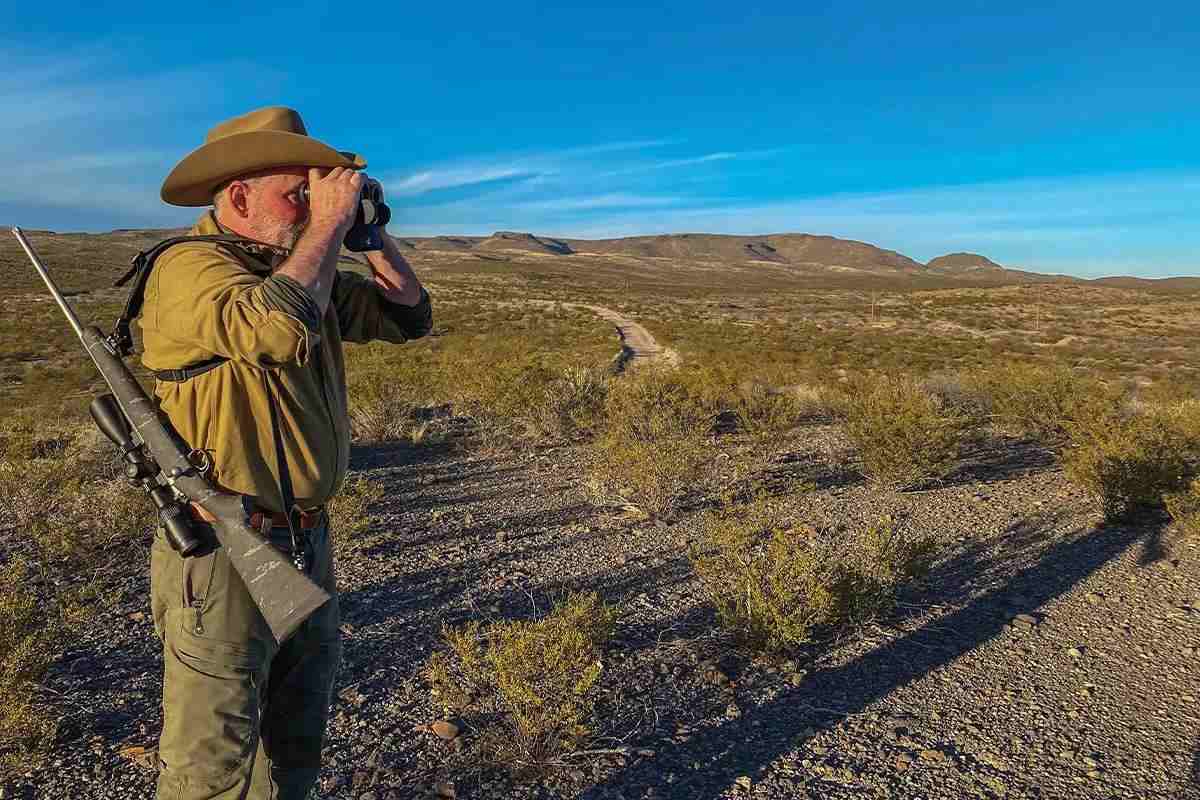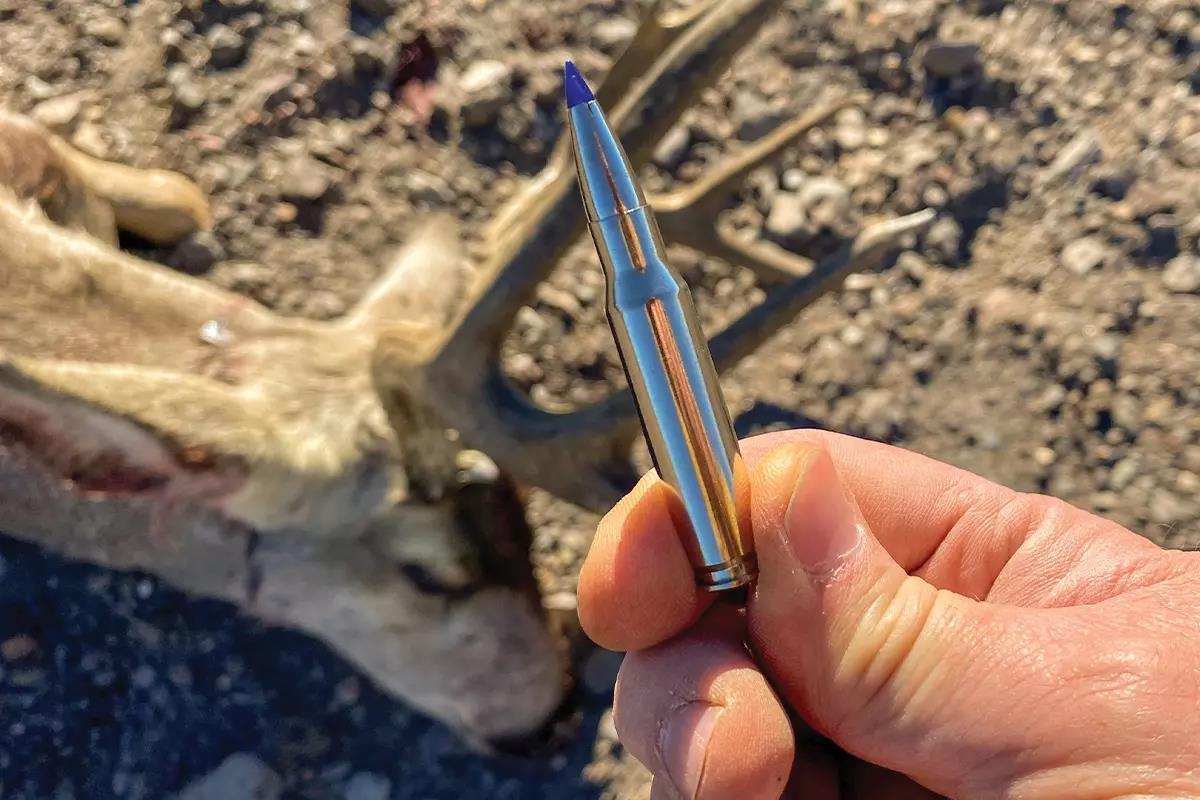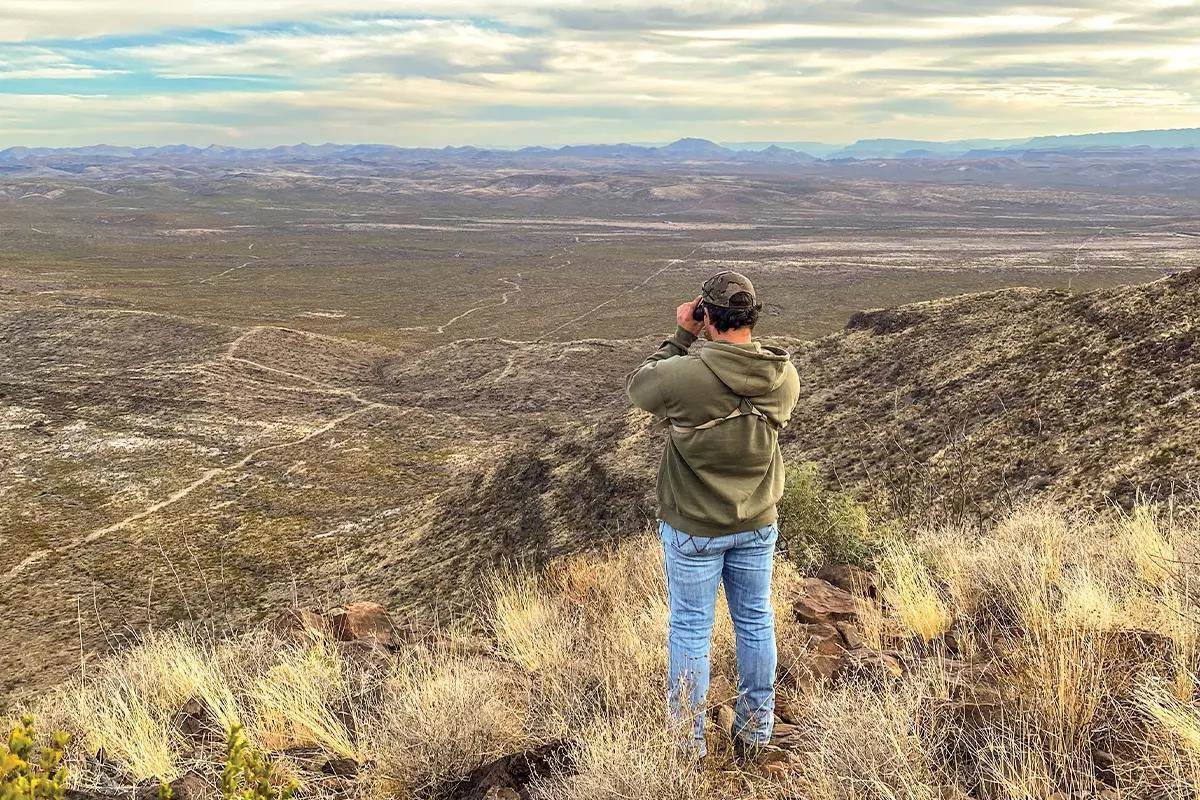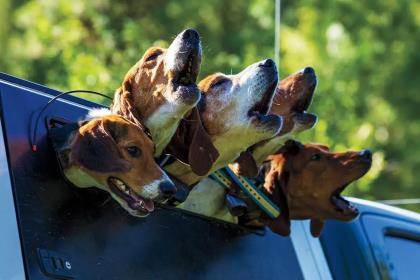Gilbert’s Buck: When a Wire-Haired Dachshund Saved Mule Deer Hunt
The outcome of a West Texas hunt hangs in the balance as Gilbert takes up the sparse trail of a wounded buck.

I like open-country mule deer hunting like the kind that’s found in West Texas down near the border. It’s dynamically different than the whitetail hunting I do at home in the Alleghany Mountains, partly because I spend a lot of time behind a binocular and a spotting scope, trying to pick a buck out of the black bush and honey mesquite that litters the landscape. Then, once I find a buck, I still need to size him up at distance to determine if a stalk is worth the effort. I did a lot of that last January while hunting with High West Outfitters just outside of Presidio, Texas, only about 10 miles from the Mexico border.
The ranch was immense and butted up against Big Bend Ranch State Park. We covered the country in an open-cab side-by-side, and while it was a bit chilly in the early hours, by mid-morning the weather was stellar. Every day we saw big bucks, and we looked at all of them long and hard. Josh Coffey, my guide, is a young and talented Texas hunter with more experience under his belt than his age would suggest. He wanted to make sure we shot a trophy. I wanted a buck that called to me when I saw him. It took us four days to find one that made us both happy.
There were some high mountains and deep canyons on the ranch, and about mid-morning on day four, as we crossed a little saddle, Josh spotted a nice buck and a half-dozen does only 100 yards off the trail. The rutted-up buck was oblivious to us, and Josh guessed him at about 22 inches wide. His rack looked like it belonged on a whitetail more than a mule deer. He seemed in no hurry to get away; he was focused on keeping his nose stuck to a particular doe’s backside. We watched him, evaluated him and talked about him. Finally, I told Josh, “I like that deer. I think I’ll shoot him.”

This is a good time to interject that the scoring and measuring of antlers means nothing to me. The deer don’t know how many inches of antler they have, and I don’t care. I want to shoot the deer with the antlers that I like and in the situation that I want. I like to hunt and shoot deer with big antlers, but I do not use a ruler to measure the success of my hunt. I have no problem with those who do; it’s just not my thing. That buck, in that instance, was the deer I wanted.
TOUGH TRAIL
As we watched the group, the doe that my buck was lusting after suddenly decided she wanted to be somewhere he wasn’t. She crested the ridge and took the buck with her. I was not that worried; they had not spooked, and Josh and I both thought that by the time we got to the top of the mountain, the deer would be in the bottom on the other side. We were right. When we reached the top, I tossed my hat on a big rock, laid the rifle across it and settled in for a shot. When I peeped through the Swarovski riflescope, though, all I could see was the top of a desert fan palm.
Josh called the range at 220 yards, but it didn’t matter as I had to move to get a clear shot. A rest was not an option, so I dropped into the seated position and slipped into my shooting sling. The problem was now the deer were spooked and were trotting off. I waited for the buck to stop in an opening. When the deer paused, Josh called out, “Three sixty.”
I didn’t necessarily want to shoot that far, but there was no wind, my position was solid, and I knew the drop of the 175-grain Federal Terminal Ascent bullet out of the .308 Winchester rifle I was shooting. I held what I thought was about 6 inches over the buck’s back and touched the trigger. We heard the bullet smack, but the buck did not fall. He only sped up his departure, now with a limp. We suspected I’d hit him in the front leg. I needed to get another bullet in him, but when the next opportunity came at 450 yards, I missed.
We made our way to where we last saw the buck but found no blood. As we were looking for spoor, the buck burst from cover and was gone in an instant. Still no blood. Josh suggested we return to camp for lunch and get the outfitter to bring his tracking dog.>/p>

Four hours later we were back at the scene with a little wire-haired dachshund named Gilbert, who in no time at all found the trail that was intermittently scattered with miniscule drops of blood. Gilbert worked diligently, and at one point we had to pull him off the track for water. After the break, he was back on the track and moving it well.
Video That May Interest You
As the trail dropped into a deep canyon, Josh and I stayed high, providing overwatch. We were about 150 yards apart, and as I was glassing a brushy draw, I heard Josh shoot and the unmistakable sound of bullet impact. I looked across the canyon and saw the buck headed away. As I dropped to the seated position, I heard Josh shoot twice more, but he missed both times. I quickly estimated the distance at about 300 yards, placed the dot in the Swarovski on the back of the buck’s head, thinking the bullet would drop into his spine, and pulled the trigger. The buck collapsed. Turns out he was only 220 yards away. Cross-canyon range estimation can be tricky. I’d hit him right in the back of the head.

OPEN-COUNTRY LESSONS
When we approached the buck, we saw that my first shot had hit just below the spine but above the lungs and exited. The buck bled very little, and the limp must have been due to muscle or nerve damage. This goes to show that unless you recover a deer, you never really know where you hit it. But I think it also illustrates a couple of points to consider when hunting open country.
First, even when you know a given bullet’s drop, you should still confirm it by practicing at distance. Like on many of my hunts, I was using a test scope-rifle combination and I wasn’t completely familiar with it. Why did not I not dial in a shooting solution? Partly because I rarely hunt that way but mostly because there was no time. Sniper-like shooting works great on the range or in competition where time is allotted, but not so often when hunting wild animals. I hit the deer too high in the body because I overcompensated for the bullet’s drop.
Shooting a box of ammo during diligent range practice would have better prepared me.
The second point is to use all available resources—including other hunters if possible—when recovering a wounded animal. Before the tracking dog was turned loose, I told Josh if he got a shot at the wounded deer to take it. Recovery was more important to me than who finished the animal. Had Josh not got a bullet in the buck (it hit him in the hindquarter) when the deer spooked ahead of the dog, chances are the buck would not have been slowed down enough for me to finish him.

Finally, when selecting an outfitter for a high-dollar hunt you might consider choosing one with a blood-trailing dog. I doubt we’d have ever seen that buck again without the help of that little wire-haired dachshund. I shot the deer twice and Josh shot him once, but it was unquestionably Gilbert’s buck.





